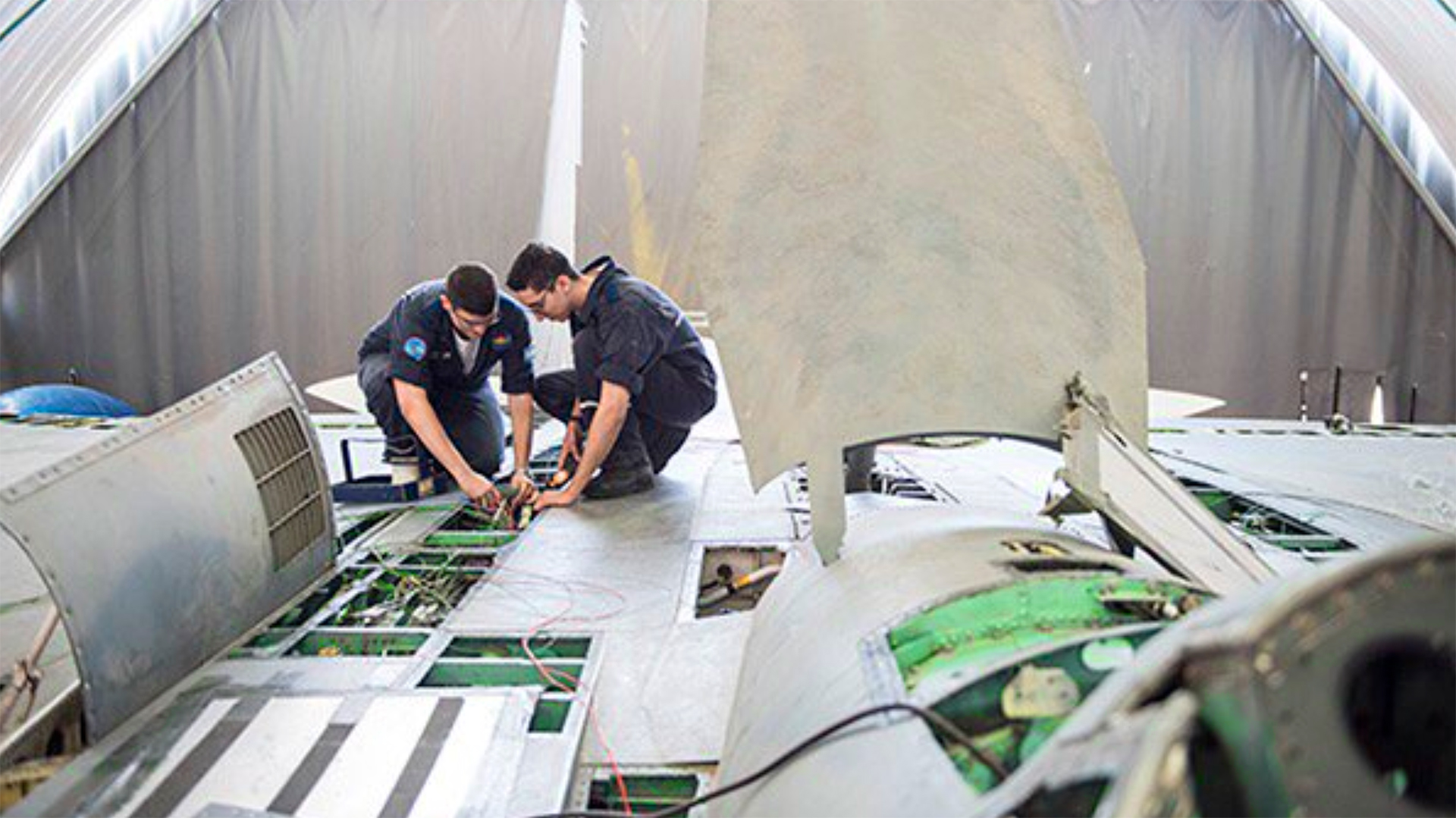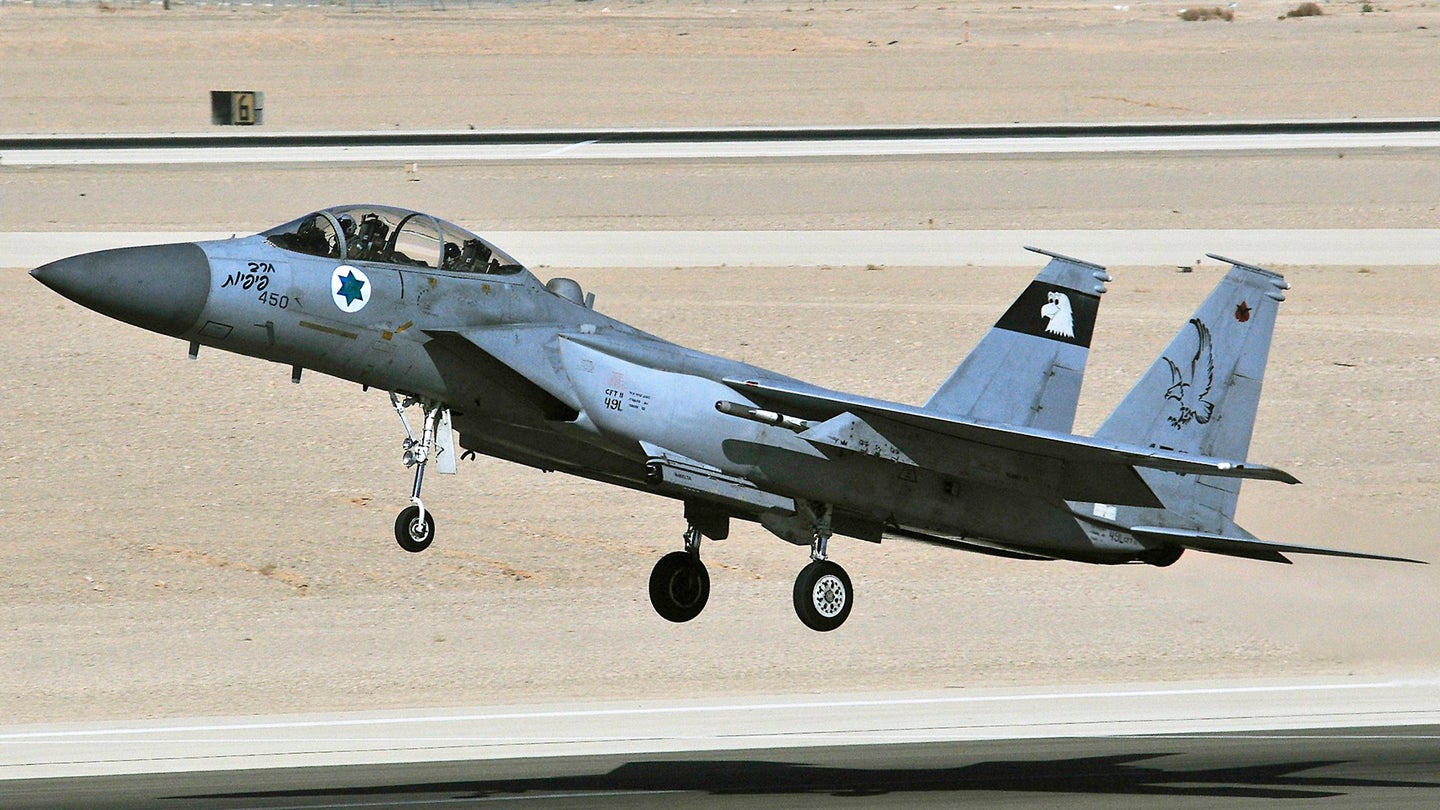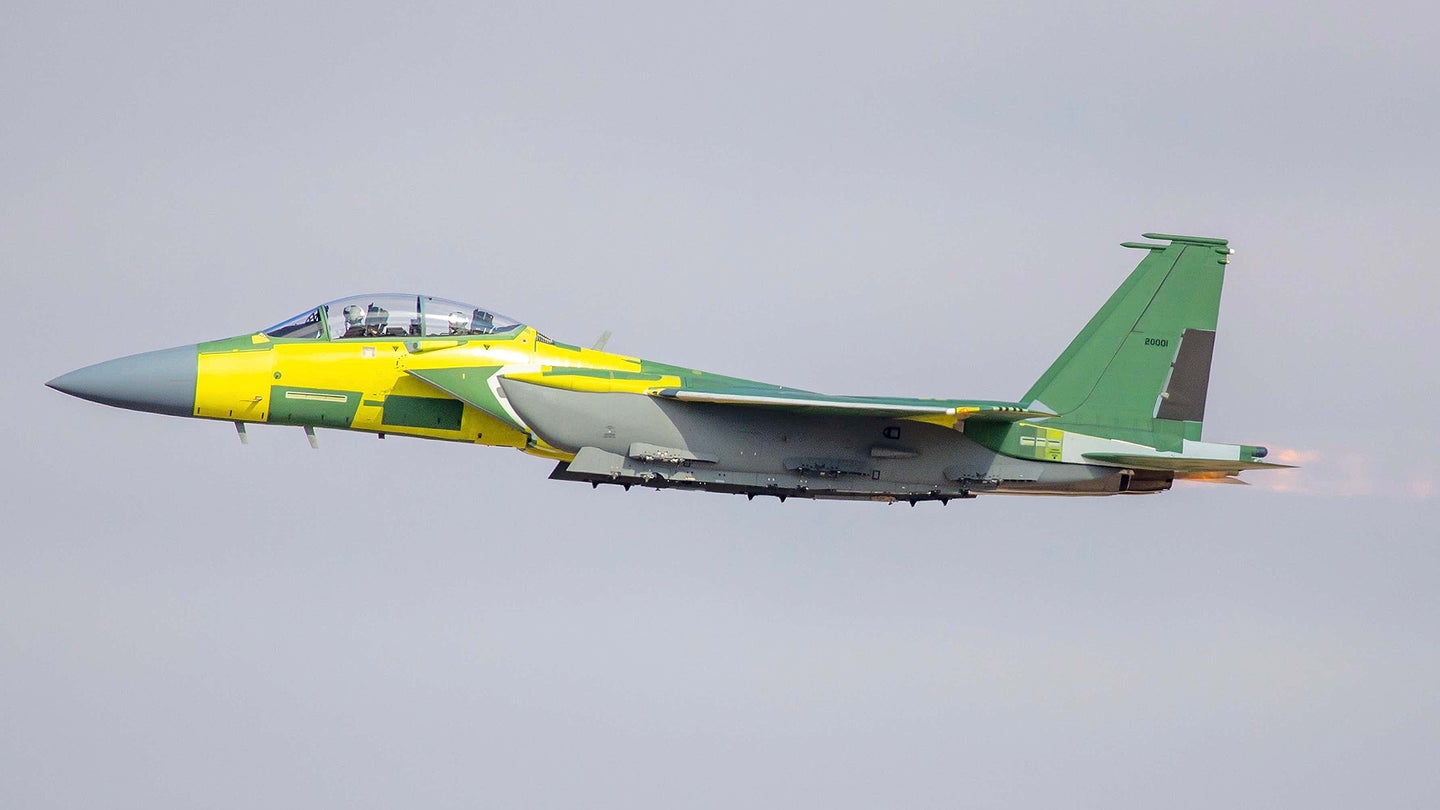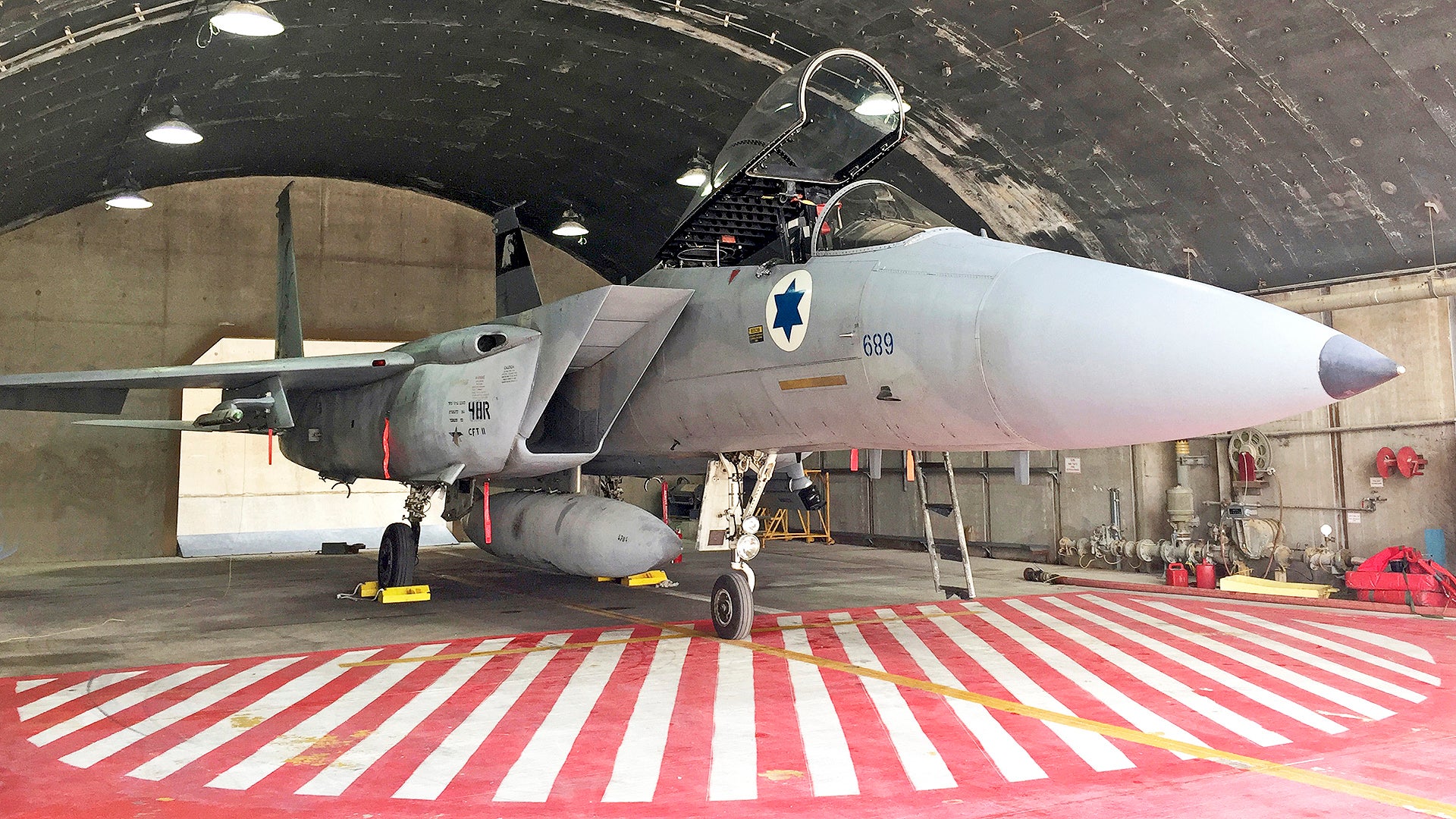The U.S. Air Force’s about-face in its steadfast commitment to only buying 5th generation fighters via the F-15X procurement initiative has changed more than many would like to admit. In fact, the reverberations of seeing this program come to fruitionwill be felt for years to come and will reach beyond this one service. One secondary impact may be on the long-anticipated choice of the Israeli Air Force, or IAF, to procure advanced F-15s alongside more F-35s, largely as part of a massive aid deal financed by the United States. In fact, the F-15EX’s own success stateside may have actually curtailed Israel’s push to acquire similar jets, and for what some would argue is a very logical reason. Possible evidence of this has come in the form of Israel’s recent major procurement announcement that included orders for more F-35s, but no word of advanced F-15 Eagles.
I have written extensively on Israel’s amazing ability to adapt the F-15A/B/C/D “Baz” to its specific needs, a phenomenon that goes back to not long after the jet entered service with the IAF nearly a half-century ago. Israel turned its ‘not a pound for air-to-ground’ Eagles in long-range strike assets replete with conformal fuel tanks long before the F-15E Strike Eagle was a thing. As the years went by, the aircraft became even more ‘Israeliszed,’ with the Baz 2000 upgrade package being especially extensive. Today, these aircraft serve as true multi-role fighters, capable of slinging U.S. and Israeli weaponry over great distances. The B/D two-seat models, in particular, are of immense value to the IAF. They have been modified to an even more extensive degree, working as networking and satellite communications hubs and as command and control assets, among their more traditional roles.

Over the decades, surplus F-15s from U.S. Air Force stocks have trickled into Israel to keep its Baz fleet as fresh and ready as it can be. In more recent years, the IAF took delivery of surplus F-15Ds specifically, as these two-seat models are truly national assets and can serve in very unique support roles, which would be absolutely critical during say an air campaign against Iran.
The IAF didn’t just receive these aircraft—which were the oldest D models around—and slap a star of David on them before shoving them into service. Instead, they carefully deconstructed them and rebuilt them, incorporating major modifications so that the aircraft could serve for many years to come. These revamped D models then took the place of worn-out single-seat models. You can learn more about this intricate and proprietary process and why the IAF puts such a high premium on the two-seat Baz in this past piece of ours.

So, what does all this have to do with the IAF buying or not buying new F-15s? Before the USAF suddenly decided to buy at least 144 F-15EXs, which will replace a major portion of its F-15C/D fleet, of which around 210 are still in service, 178 of them, the cream of the crop, were slated to be kept flying for decades to come under the Golden Eagle roadmap. Some of the oldest of the lot would likely need new wing sections towards the end of the 2020s, a costly affair, that, along with a number of factors, including force mix concerns and the missions these aircraft would be primarily tasked with—homeland defense and hypersonic missile trucks—pushed the Air Force to buy the F-15EX instead of upgrading its older F-15C/Ds. It’s also worth noting that about a couple dozen or so of the air superiority Eagles still flying with the USAF today are two-seat F-15Ds.

So, with the emergence of the F-15X initiative, all of the sudden, the prospect of over 200 later-production F-15C/Ds, and specifically a couple dozen D models, being designated surplus by the USAF became a very palpable reality. Now that the F-15EX is being officially procured, it is even far more likely at least some of the Air Force’s unwanted F-15s will soon become available. Seeing as the last F-15Ds transferred to Israel cost nothing beyond the upgrades, free is a very good price. This is especially true when a new F-15EX will cost upwards of $80-90M and will take time to move through production.

While Israeli’s pocket force of 25 F-15I jets (based on the Strike Eagle) still is a key element of Israeli’s air combat capability, the introduction of the F-35 and various new forms of standoff weaponry, may have put less emphasis on acquiring brand new 4th generation jets with all the bells and whistles, and more emphasis on procuring weapons trucks and networking platforms that can be tailored by Israel to its exact specifications and loaded with indigenously-developed hardware. If you can get 80% of what you absolutely need out of additional F-15s for 20% of the cost by acquiring second-hand jets, that may be a very hard proposition to pass up.

In addition, the F-35I, which Israel is also capable of modifying, would be better suited for deep strike missions and operating in highly contested airspace during the opening days of an air campaign, anyway. The F-15 as a rear-echelon long-range tactical support aircraft and weapons truck, capable of carrying far-reaching standoff weapons and providing network connectivity and command and control for other elements, including F-35Is, would still represent a very potent capability at a very attractive price. This is in addition to the F-15C/D’s legendary air-to-air chops. The era of manned-unmanned teaming via ‘loyal wingman’ drones is also drawing near. The two-crew and heavily upgraded F-15D would be an ideal asset for such a capability.

There is an even bigger play here potentially. Israel could also pick up around a few dozen late-build F-15Cs to replace its single-seat Baz force, or a portion of it, as well. Most of the USAF F-15Cs are now equipped with the AN/APG-63(V)3 active electronically-scanned array (AESA) radar, the most powerful air-to-air fighter radar on earth. This is a multi-million dollar upgrade per jet that the Air Force has already paid for and would likely remain intact in a transfer deal.

This is not to say that the IAF may not still choose to procure a squadron or two of F-15EX derivatives in a similar way as they procured 25 F-15Is over two decades ago. There are certainly many arguments as to why doing so would be prudent, including the fact that it is very hard to compete with the reliability and longevity of a brand new jet, and the new capabilities of the F-15EX are undeniable. Still, considering their burgeoning indigenous F-15 Baz upgrade program and how far they have gone to restore the oldest D models the USAF had to offer, I have a feeling the role of the F-15 in their mind is more in line with this than with the F-15EX’s advanced capabilities. This way they can add F-15 inventory depth (totally around 50-55 F-15A-D Baz and 25 F-15I Re’am today) where they really need it and buy more F-35s at the same time—there wouldn’t be a heavy tradeoff.
In the end, the USAF looks set to put its entire “air superiority Eagle” fleet out to pasture to make room for the F-15EX, which may have presented the IAF with an opportunity they could only have dreamed of just five years ago. If its proprietary F-15 Baz configuration is enough to satisfy its 4th generation heavy fighter needs, and ample stocks of those jets will be becoming available for very low to no cost in the not so distant future, the F-15EX may have become a luxury the IAF no longer needs to pursue, at least at this time.
Contact the author: Tyler@thedrive.com
